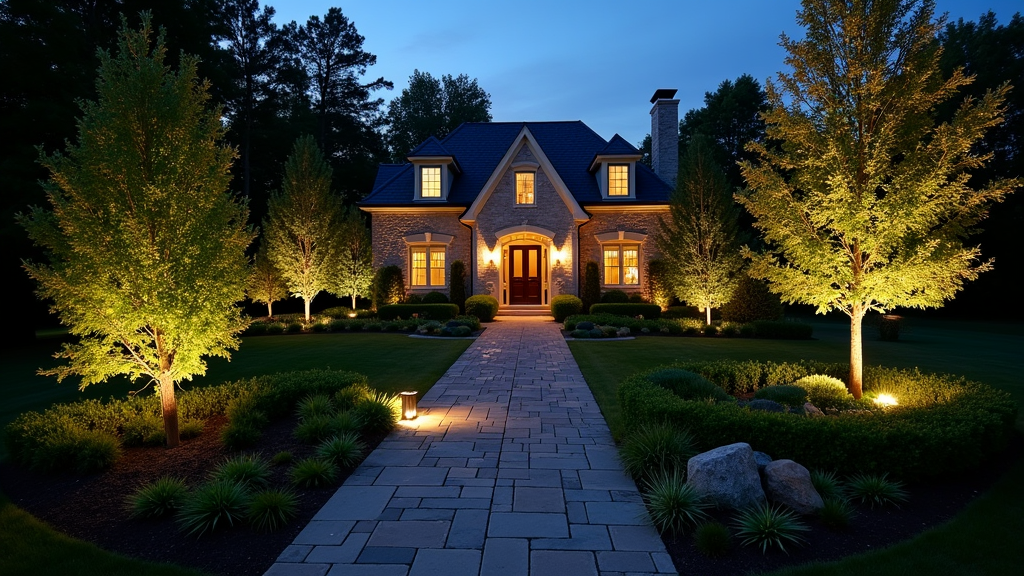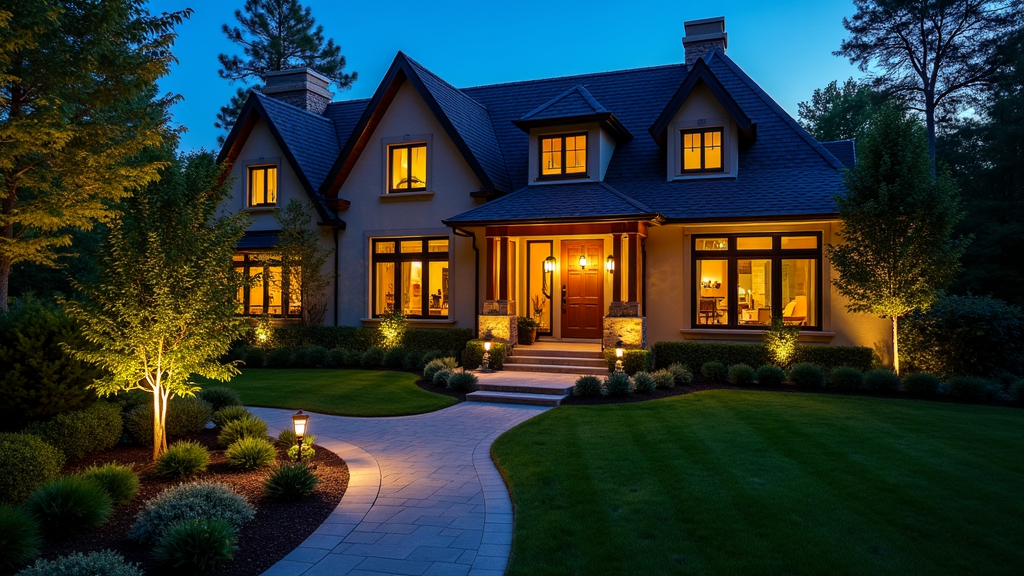Introduction
Welcome to the colorful world of landscape design! If you’ve ever looked out your window and thought, “This yard could use a little sprucing up,” then you’re in the right place. Landscape design is more than just planting flowers; it’s about creating an outdoor space that reflects your personality, enhances your home’s value, and brings joy to your life. This guide will walk you through landscape design for beginners, offering practical tips, creative ideas, and step-by-step instructions to help you create a beautiful landscape that you'll love.
Whether you're starting from scratch or looking to revamp an existing garden, each section of this guide will serve as a valuable resource. So grab a notepad and let’s dig into designing landscapes like a pro!

Understanding Landscape Design
What is Landscape Design?
At its core, landscape design is the art and science of planning and arranging outdoor spaces. It encompasses everything from gardens and parks to backyards and commercial properties. The goal is to create functional, aesthetically pleasing environments that harmonize with nature.
The Importance of Landscape Design
Why should you invest time in landscape design? Well, here are some compelling reasons:
- Enhances Curb Appeal: A well-designed landscape can make your home stand out in the neighborhood. Increases Property Value: Beautiful landscaping can significantly boost the resale value of your property. Environmental Benefits: Thoughtful design promotes biodiversity, improves air quality, and supports local wildlife. Personal Enjoyment: Ultimately, a great landscape offers a space for relaxation, recreation, and connection with nature.
Getting Started with Landscape Design
Assessing Your Space
Before diving into design ideas, it’s crucial to assess what you have. Take note of:
Size: Measure your yard's dimensions. Sunlight: Observe how sunlight moves across your space throughout the day. Soil Type: Perform a soil test to understand its composition and drainage capabilities. Existing Features: Identify any trees, shrubs, or structures that will remain.Setting Goals for Your Landscape
What do you want from your landscape? Here are some common goals:
- Creating a play area for kids Developing an outdoor entertaining space Cultivating a vegetable garden Establishing a peaceful retreat
Developing Your Style
Your landscape should reflect your personal style. Consider these popular themes:
- Traditional: Symmetrical layouts with classic plants. Modern: Sleek lines and minimalistic plant choices. Cottage Garden: A lush mix of flowers and greenery. Xeriscape: Drought-resistant plants in arid climates.
Design Principles for Beginners
Balance in Landscape Design
Balance refers to the visual weight of elements in your design. It can be symmetrical (equal on both sides) or asymmetrical (different but still balanced).
Unity Through Repetition
Repetition creates unity in landscaping. Use similar plants or colors throughout the design to tie different areas together.
Focal Points in Designing Landscapes
Every great landscape has a focal point—something that draws attention. This could be anything from a stunning tree or sculpture to a water feature.

Scale and Proportion
Ensure that the size of your plants and structures matches their surroundings. Large trees may overwhelm small spaces while tiny flowers could get lost in expansive gardens.

Creating Your First Landscape Plan
Sketching Your Ideas
Start by sketching out your ideas on paper or using digital tools like SketchUp or Garden Planner. Don’t worry about perfection; this is just brainstorming!
Choosing Plants Wisely
When selecting plants for your landscape:
Consider climate zones. Think about maintenance levels (some plants require more care than others). Choose native species when possible—they often thrive best!Incorporating Hardscaping Elements
Hardscaping refers to non-plant materials like patios, walkways, walls, and fences. These elements provide structure and function within your landscape.
Popular Hardscaping Materials:
- Pavers Natural stone Concrete Wood decking
Plant Selection Strategies
Understanding Plant Types
Familiarize yourself with various plant types including perennials (long-lasting), annuals (seasonal), shrubs (bushy), trees (tall), vines (climbing), and ground covers (low-growing).
Seasonal Color Schemes
Think about how different plants bloom at various times of year—mix them up for year-round interest!
Water Features in Landscaping
Adding Tranquility with Water Features
Water features add beauty while providing soothing sounds—think fountains or ponds!
Benefits of Water Features:
Attracts wildlife Enhances property value Creates ambianceLighting Your Landscape
Importance of Outdoor Lighting
Good lighting extends the usability of outdoor spaces into evening hours while highlighting beautiful features.
Types of Outdoor Lighting:
- Path lights Spotlights String lights
Sustainable Landscaping Practices
Embracing Eco-Friendly Techniques
Sustainable practices minimize environmental impact while promoting healthy ecosystems.
Key Sustainable Strategies:
Native Plant Choices Efficient Irrigation Systems Composting ResiduesMaintenance Tips for New Landscapes
Creating a Maintenance Schedule
Establish regular tasks like watering, pruning, weeding, and fertilizing to keep your landscape vibrant.
Seasonal Maintenance Tasks:
| Season | Tasks | |------------|----------------------------------| | Spring | Plant new flowers; weed control | | Summer | Water regularly; mulch beds | | Fall | Prune trees; clean up leaves | | https://connerzzkg.bloggersdelight.dk/2025/02/28/exploring-the-benefits-of-xeriscaping-in-landscape-design/ Winter | Plan next year's layout |
FAQs About Landscape Design for Beginners
li33/ol5/li34li34/ol6li35# How do I start my landscaping project?- Begin by assessing your space & setting goals before sketching ideas.
- Native plants naturally thrive in local conditions without requiring much maintenance.
- Absolutely! Many resources are available online to guide DIY enthusiasts through every step.
Conclusion
Congratulations! You’ve taken the first steps into the exciting realm of landscape design with this comprehensive guide tailored specifically for beginners! Remember that designing landscapes isn’t just about aesthetics; it’s also about functionality and sustainability—creating spaces that bring joy today while protecting our environment for tomorrow.
As you embark on this journey, don’t hesitate to experiment! Each garden tells its own story—a reflection of who we are as individuals—and there’s no single “right” way to achieve beauty outdoors! Happy gardening!